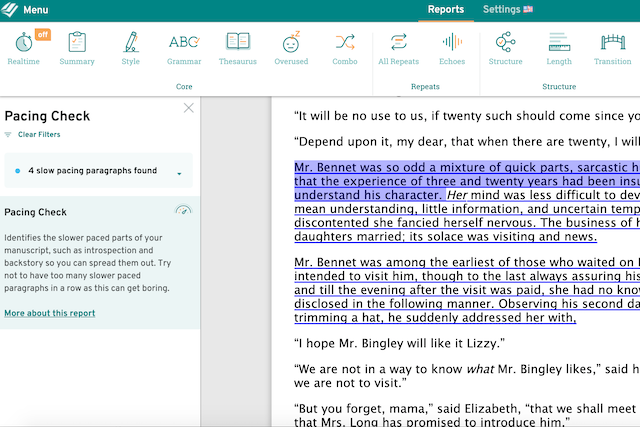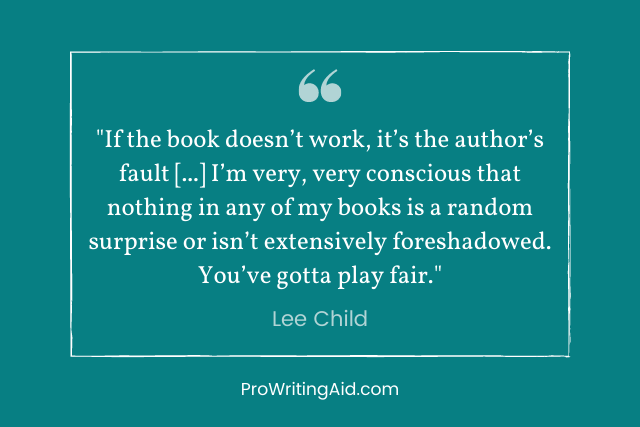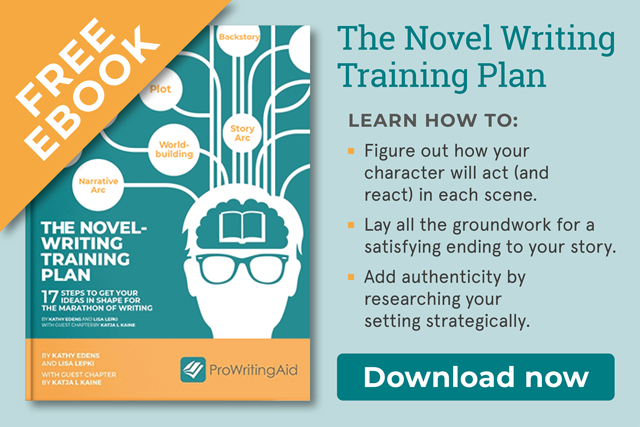
Whether you subscribe to the Christie School of Mystery or the Hitchcock School of Suspense, you can learn from both to create a novel that knocks the socks off your readers.
This might sound crass, but manipulating your target audience to keep them turning pages is key.
Have you ever stayed up way past the time you should be asleep to read "just one more chapter"? If you have, you’ve succumbed to the lure of a master of mystery or suspense.
Because, seriously, you NEED to know what happens next. (At least, that’s what you tell your boss the next morning when you’re five minutes late. If you’re lucky, your boss understands completely.)
Alfred Hitchcock once said:
"A glimpse into the world proves that horror is nothing other than reality."
Mystery, horror, suspense… they’re all closely related to what we fear most in the wee hours of the morning.
What keeps you awake at night? Is it a serial killer like Ted Bundy who coerces victims into his web? Or perhaps a nefarious individual who sees a split-second opportunity to snatch someone off a street corner?
Or maybe it’s someone who plans his crime spree much like a gourmet chef plans his menu. In each situation above, you can easily cast yourself as the victim, right?
The best mystery narrative marries your worst nightmare with real-life occurrences to create something you feel is authentic combined with what seems outlandish. Since you can’t make up a lot of what happens in real life, stealing from headlines lends a truth.
Add to that an outlandish act, and you’ve created a dramatic situation to make your reader focus on both the horror and mystery as well as the suspense of "what happens next?"
Start with an earthquake—or at least a seismic activity
Most best-selling authors tell you to start with a bang; this might be a murder or a chase through downtown San Francisco.
Maybe your characters are hiking the Appalachian Trail and something goes horribly wrong. Regardless of where you set your earthquake, it needs to be something that shakes your characters’ world.
More importantly, where you set your earthquake is more than a simple background. It might become a separate character in your mystery. It’s one thing to set a mystery in small-town Ohio; it’s another to set it in one of the most haunted villages on the U.S. map.
This doesn’t mean you choose a setting that’s cliché. Seriously, who wants to read another mystery that happens in a secluded alley in the black of night?
Consider how one of the most suspenseful scenes for Cary Grant’s character in North by Northwest happens in broad daylight as part of a crop-dusting scenario. Isn’t it more suspenseful for your readers to realize that a mystery can happen at any moment, even on a sunny day in America’s heartland?
Move your story quickly along
As a writer, you already know you need to create a strong main character. He or she needs to be unique with both strengths and weaknesses that show readers they’re human.
Your main character may be someone readers feel strongly about because when the Sh!t H!ts the F@n, readers will root for him or her regardless of the struggles they face.
A mystery pits someone in a position to solve the crime against the criminal’s efforts to get away with it or at least cover his or her tracks. The mystery, by definition, means the main character must solve a series of clues or kind of puzzle to discover "whodunnit."
Sudden switches keep readers guessing what might happen next. They also keep readers alert and scouring your story for what comes next. Sudden switches can include new settings.
A quick succession of scenes makes readers race to catch up to the main character, wondering where and how he or she will meet the final denouement. Part of moving quickly includes adding characters, locations, and settings to keep your readers on their toes.
Keep Track of Pacing
However gripping your mystery is in theory, if you don't pace your story effectively readers won't care about it in practice. It’s easy to dive too deep into the details when you've put so much time into planning and creating them.
Do your ideas justice by making sure you're varying your exposition, action, and dialogue with ProWritingAid's Pacing Report.

ProWritingAid can highlight your slower-paced paragraphs so you can make sure you’re getting all of the detail across without losing your reader.
Avoid stereotypes
Agatha Christie relied on memorable villains. So should you. Avoid the cliché or stereotype villains and create someone that your reader will fear for years to come.
Make your villain attractive, make readers fall in love with—or at least adore—your villain and then show his or her dark side. Just when the reader starts to feel something for the villain, you reveal the depths of his or her depravity as they get closer to their victims.
Part of creating a memorable villain is to use descriptive writing. When you show, not tell, your readers what the villain is thinking and doing, they can sometimes reluctantly accept the villain’s outlook, or develop their own suspicions about what the villain is planning.
Consider how some best-selling mystery novels go deep in the minds of their villains (e.g. The Silence of the Lambs) to draw readers deeper into the abyss before letting them catch a glimpse of the hero climbing out of the dark hole into the light of justice.
Map your darkest moments
As a writer, you need to know how deep and dark the villain goes.
You don’t necessarily need to share that darkness with your readers, but you need that vision in your mind as you write your novel. You must know exactly how the crime (or crimes) were committed and the intrinsic motive behind each.
As much as it might haunt your dreams, understanding your murderer’s motive, reasoning, and the clues that lead to his or her demise is imperative.
Carefully plot clues and red herrings
Every mystery is full of clues and red herrings. As harsh as this sounds, you want to jerk your reader around from clue to red herring back to clue and further down the trail that leads to solving the mystery.
Your best strategy is to make a list of clues and red herrings that you can sprinkle in your narrative to move readers along the trail. You must know in advance what your crucial clue is.
You want to plant it far enough down the trail yet early enough that readers won’t become exhausted searching for the one that breaks the bank—or solves the mystery.
The more red herrings (or false clues) you can embed in your narrative, the more your reader must work to solve the mystery. The key is to plant just enough red herrings that you don’t overuse them and cause your readers to give up.
IMPORTANT NOTE: Always play fair with you reader; don’t give him or her more more clues/red herrings than the average person can assimilate. You always want your reader to end with: "I should have known that!"
Lee Child is pretty strict with himself when writing twists and turns:

Create your story’s resolution
You must wrap up all loose ends. If you have a love interest between two characters, either move it forward a step or dissolve it and let it fade away. If your main character grows or shifts his or her perspective, wrap it up at the end.
Your main character likely ends up doing one of the following:
- saving someone or loses someone
- saving themselves from a harsh outcome
- exposing someone else who is a "bad egg," i.e. a nefarious character or organization.
Think how Shaggy and Scooby Do always seem to bumble their way to catching the bad guy at the end. You, too, must wrap up your story just as neatly.
Study the masters
Granted, most authors do a better job of wrapping up their mysteries than Scooby Do. You can’t go wrong studying the masters. Agatha Christie, Alfred Hitchcock, and so many others create mysteries that bleed suspense and anticipation.
Sir Arthur Conan Doyle, Thomas Harris, Raymond Chandler, and even amazing young adult authors like Franklin W. Dixon (The Hardy Boys) and Carolyn Keene (Nancy Drew) knew what it takes to create a mystery readers devour in a single sitting.
If you want readers to come back to your series, books, or stories again and again, figuring out how the masters structured their narratives, built their characters, and used setting and scene as a third, albeit immovable, character will help you create something that resonates with readers.
If you want to see how you stack up against Agatha Christie or other bestselling mystery authors, sign up for ProWritingAid. Premium users can select from more than 90 authors to compare your writing against. Just select the author you want in your settings and run the Summary Report.
Final thoughts
Write like the legendary Agatha Christie and start the action immediately. There’s no reason to wait and tease your readers. Kill that poor person right off the bat.
Be specific in details, setting, and your main character’s observations. Not only set the scene, but set the scenario for your main character’s and other’s motivations. Why are these people invested in this mystery’s outcome and what do they have to gain—or lose?
Happy sleuthing!


